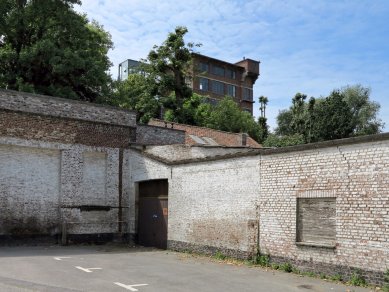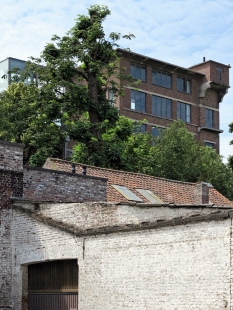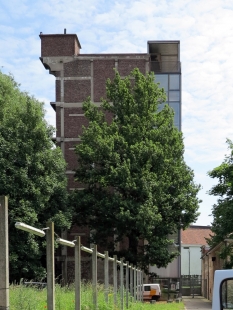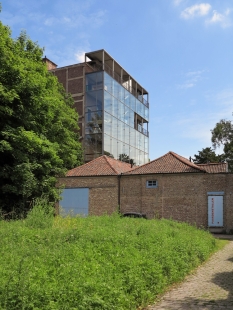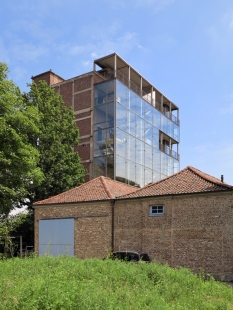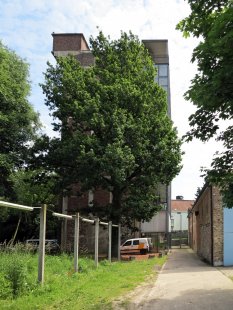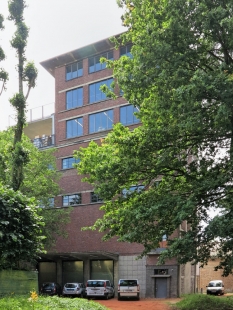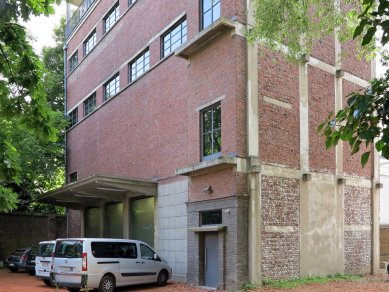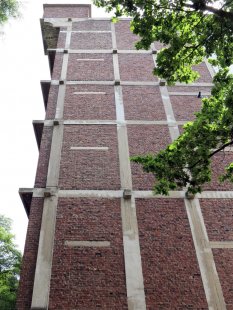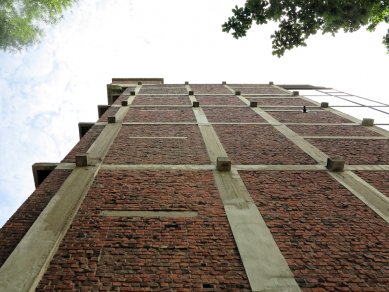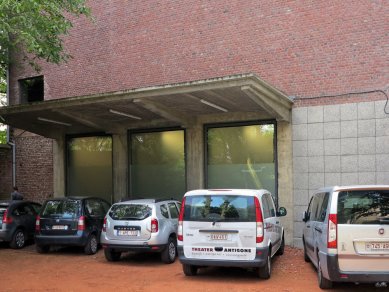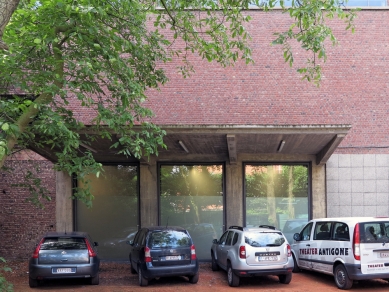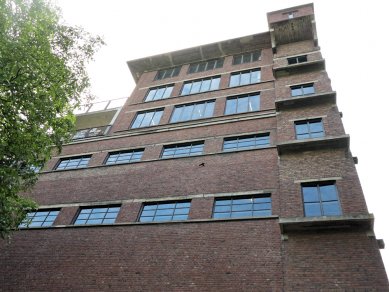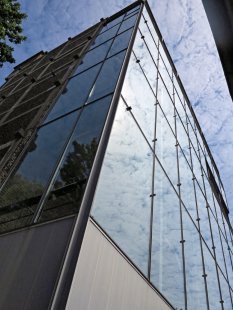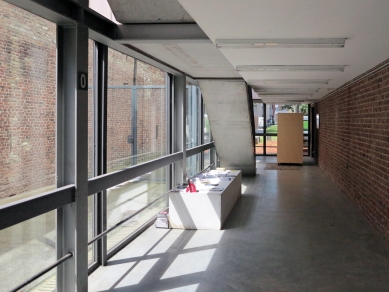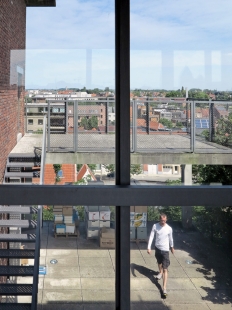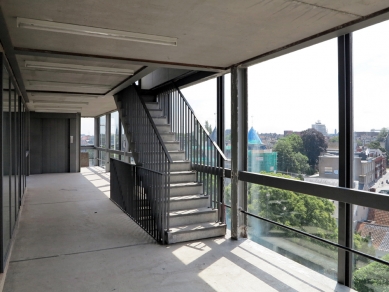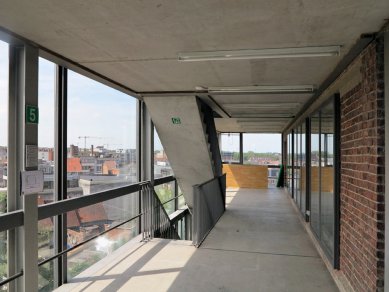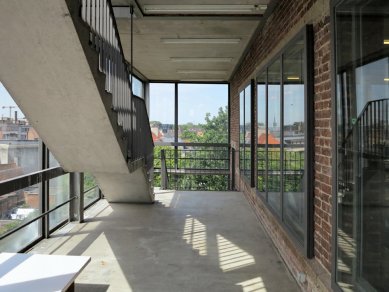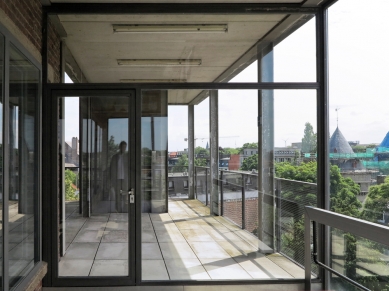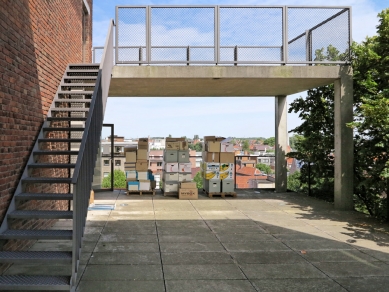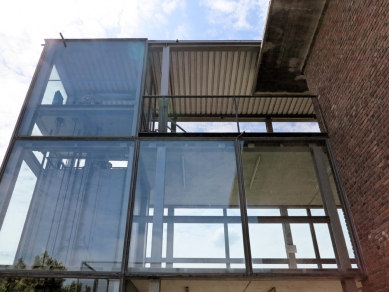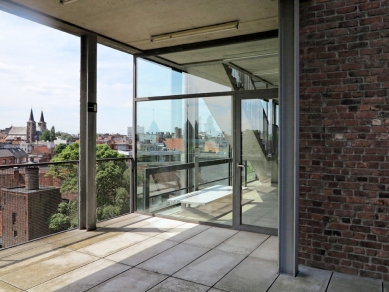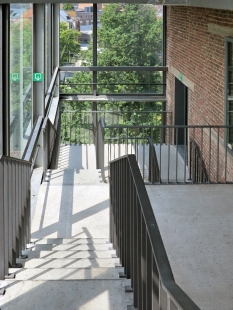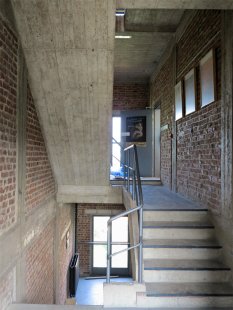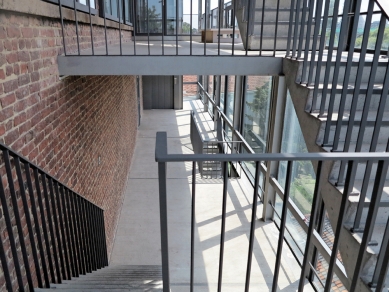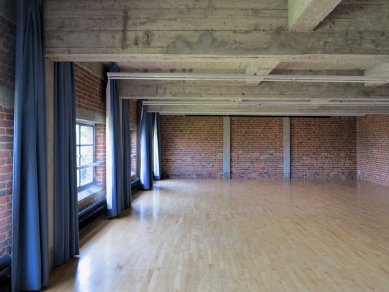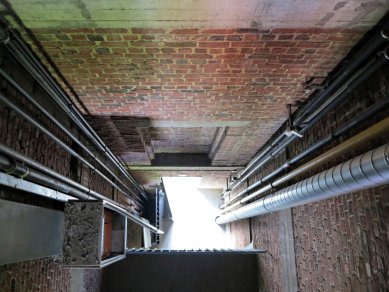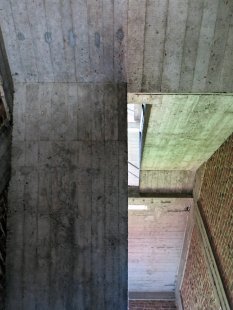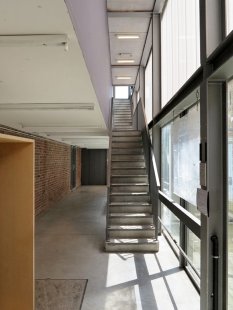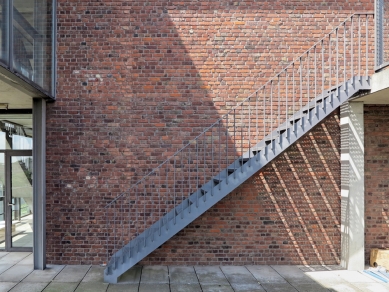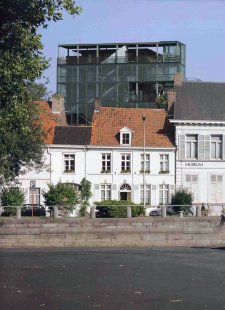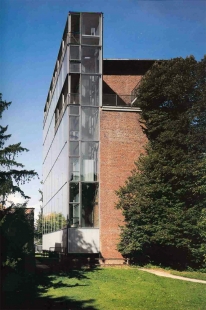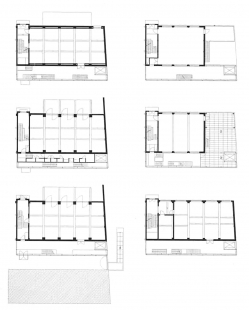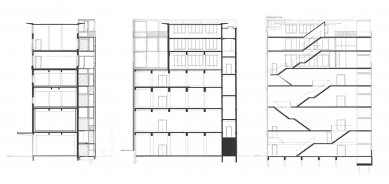
Tacktoren
Reconstruction of an industrial building into an arts center

 |
The brewery tower Tacktoren dates back to 1948 according to a design by the Gernay studio. The tower, which originally served for so-called mashing and from where the smell of malt wafted into the surroundings, did not allow for much further use. Before its demolition, it was saved by artists seeking unconventional spaces. The structure, which would otherwise be unthinkable for residential or ordinary life needs, provides artists with an inspiring environment of workspaces, studios, and halls. Today, the Tacktoren complex (now Budatoren) serves a community of 40 associations and 150 artists.
At the beginning, the project was by Stéphane Beel, who, together with Lieven Achtergael, designed to preserve the original tower and both authors minimized their interventions to a prefabricated glazed wall containing all the necessary communications. The historical structure could thus only be cleaned to the reinforced concrete skeleton and the infill brickwork. A three-meter strip of staircases, elevators, and toilets resolved the busy operations of the art center. It has become a foyer, a meeting place, and offers unexpected views of the historic center of Kortrijk. The new subtle intervention contrasts with the massive brewery tower. When viewed from a distance, the new extension can be seen through and only the original object can be perceived.
The authors used a steel structure known from industrial buildings. The details are simple and functional without artistic aspirations. The simplicity of the new extension resonates with the minimal interventions to the old structure. The fewer attention-diverting details on the building, the more the artists can focus on their own creation and the visitors on the exhibited art (in the case of Tacktoren, it mainly concerns theatrical and dance performances).
The English translation is powered by AI tool. Switch to Czech to view the original text source.
1 comment
add comment
Subject
Author
Date
super
granko
08.08.13 09:13
show all comments


